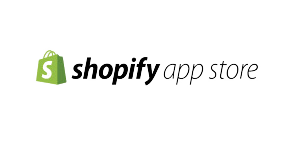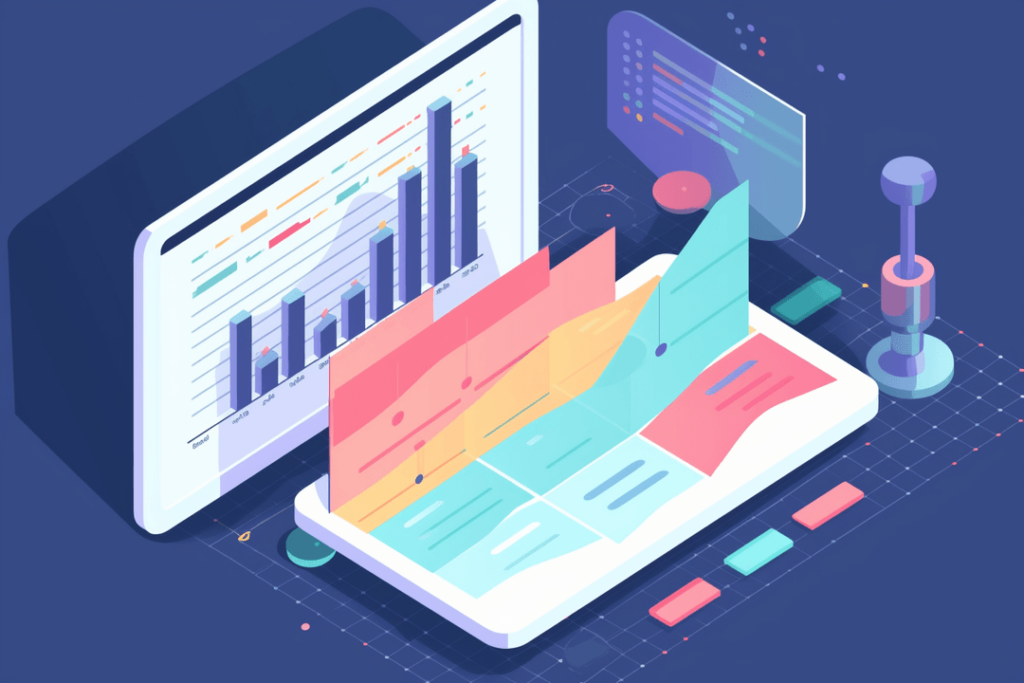I see you read the title “What is a UTM Tag?” and thought, “Will this article really answer my question?”
Of course we will.
But we’ll do something even better.
We’ll not only tell you what it is, but also show you how to use it to make millions.
A UTM tag is crucial for organization, something countless businesses lack.
You see it all the time.
People just go with a strategy because they think it sounds trendy or because it’s what everyone else is doing.
This is one recipe for disaster.
There’s no proper measurements in place to see if your methods are working.
This is how your competitors smash you to pieces.
They know about tracking their marketing and how important it is to make millions.
They might’ve just made another million as you’re reading this because they knew what was working for their store.
A UTM tag puts the data in data driven decisions and helps you do what so many businesses can’t do.
Get results.
You become the business that people want to copy and spend hours analyzing.
Since you’re still reading, we assume you’re looking to get those million dollar results.
So with that being said, let’s get straight to it.
What is a UTM Tag?
A UTM tag (also known as Urchin Tracking Module tag), is a URL that tracks the traffic that comes to your website from a source.
As you grow your business, you’ll start to implement many ways to market your product.
But you need to know which ones actually drive traffic, otherwise you’re wasting money.
Let’s make sure that doesn’t happen.
To show you how this works, let’s use an example.
Let’s say you sell cosmetics and you’re launching a new apricot exfoliator. One way you want to promote the product is through Facebook Ads.
You want to measure the traffic coming from your ads to buy this product, and so you decide to build a UTM tag.
There are 5 components of a UTM tag and we’re going to walk you through each one while building the UTM tag for this exfoliator.
1. Source (utm_source)
This parameter shows you where your traffic is coming from.
As we already know, for our exfoliator, one way we will promote it is through Facebook Ads.
Facebook Ads is the source. Here’s how the source component of the UTM tag will look:
utm_source=facebook
2. Medium (utm_medium)
This component shows you the medium that your traffic came from.
We are promoting the exfoliator through our newsletter that comes via ads. Therefore, Cost per Click (CPC) is the medium.
Here’s how this component looks in the UTM tag:
utm_medium=cpc
3. Campaign (utm_campaign)
This is how you keep track of which campaign the traffic came from
For our apricot exfoliator, this is a product launch campaign, here’s how this component looks
utm_campaign=apricot_exfoliator
4. Term (utm_term)
This component of the campaign is mainly used for paid marketing, and it tracks the keywords used for your paid campaigns.
This can be used for your other campaigns that aren’t paid.
Here’s what this component of our new exfoliator could look like.
utm_term=best+exfoliator
5. Content (utm_content)
If you created different versions of this ad, this is where this comes handy.
If you created two facebook ads for your product, here’s how the component for the first version would look:
utm_content=ad1
When we put all this together, we get the following:
Why UTM Tags are Critical
We can write a very long essay on why UTM tags are vital to your success.
But that won’t be necessary because we can just summarize that gigantic essay into one beautiful word:
Efficiency
As your shopify store grows and you start experimenting with more marketing.
That’s awesome. Except for when you start to burn your money.
If you’re not tracking your traffic sources properly, you’re wasting your time and throwing your money into a dumpster fire with all your hopes and dreams.
The UTM Tag will save you an enormous amount of time because it shows you:
1) Where your traffic actually comes from.
2) The ROI of each traffic source.
3) What source you need to double down on and grow fast.
There are so many Shopify stores that don’t do this and they never scale. Their money is being thrown at the worst traffic source possible.
These stores might have great products, but because they don’t understand how to analyze their traffic, they let their competitors with the worse product win the battle for the loyal customers.
But this whole issue can be solved if they just implemented UTM tags.
You can be creating a loyal following for your brand if you understood what your customers truly loved to see and what they interacted with.
The UTM tag solves this problem for you.
You see the actions of the consumer and can tailor that to give them a better experience.
Sounds amazing right? It is.
They help you understand your advertising costs and where to allocate them.
Let’s show you some ways to use this to build a more loyal brand.
How to Use UTM Tags to Scale to Multi-Millions
You know what UTM tags are and why you should care about them. Now let’s see 5 ways that you can use UTM tags to scale rapidly
1. A/B Testing
It’s amazing how the small details determines whether your marketing material is a success.
A/B testing is when you test different versions of the same marketing material. For example, you may send an email promoting your Black Friday Sale.
One version (version A) has your Call-to-Action at the top and bottom of the email whereas the other (version B) has it only at the bottom.
You then send version A to one group of customers and version B to another and see how each version performs
If you create a UTM tag for each email version, you create an easy and efficient method of tracking each performance.
You may find that placing a call-to-action at both the top and bottom generates a higher conversion rate than only placing it at the bottom. The reason you found this out in the first place was because you put a UTM tag on it to track the performance.
Since you can find hidden gems such as the one above, you’ll be able to create tailored marketing and therefore have a more efficient marketing spend for your business.
2. Better Content
One piece of advice that is given to businesses is to create content.
This advice is still given because it still works to this day.
But the problem is, what type of content do you create?
Videos?
Infographics?
Blogs?
The honest answer is it depends on who your customers are.
But do you know how you can find out which content resonates most with your audience?
By using UTM tags
You can make all the content you want and track the performance of each style of content to see what your audience really likes.
If they don’t really come from your videos, but rather your blogs, focus on creating the best blogs possible. There’s no reason to focus on videos. They’ll take too much of your time.
UTM tags remove the confusion from your marketing and ensures you understand what your customers actually want to see based on the data.
3. Landing Pages
Landing pages are a pivotal page of your brand.
They set the tone for your audience and lets them know what type of brand you are.
Its the one page that determines whether the visitor wants to explore your website.
All that effort you put into your website whether it be the beautifully designed pages, or the carefully thought out words you wrote comes down to that one landing page.
Just that one.
That one page is what helps the visitor decide if they want to engage with your brand.
Knowing that there’s a lot riding on this one page, we can say that you would want to track the performance of it to make sure it was converting right?
UTM tags help with this.
You can provide different designs for your landing pages and test different versions of it to see how each of them convert.
Don’t do what other stores do and just assume your landing page is perfect because you love the design.
That type of thinking is what drove them out of business.
4. Influencer Marketing
With the rise of social media, influencers have become a prevalent source of marketing.
Attaching your brand to someone with a great reputation in your industry seems like a no-brainer right?
No.
Everyone thinks that an influencer is going to save their brand and be the reason why they make millions.
Even if this person is a big name in your industry, it still doesn’t mean anything for your business.
“But my store would get brand exposure”
Sure it would. But it doesn’t mean much if people aren’t coming to your store. That’s like having a lot of fame but barely any money.
It just isn’t fun.
If you do go the influencer route for your marketing, use a UTM tag to see if it generated a positive return for your store.
This helps you avoid the vicious cycle that so many brands go through of just throwing money at influencer marketing.
Now that you’re aware of UTM tags, you avoid this cycle entirely.
Understanding how to track your marketing efforts can be tricky, however, with UTMs, you ensure that you can properly allocate your budget.
5. Customer Segmentation
If you use an app like BytheNumbers, you’ve already seen the power of customer segmentation.
By doing targeted campaigns to different segments, you can see if your segments are liking what you present to them.
Segments can be tricky to navigate, but with UTM tags and a marketing analytics app such as By the Numbers, you make the process smoother.
With UTM tags, you can use the data to prove that dormant customers have a higher click-through rate when they’re sent an email with a big discount on select items (for example).
Customer segments are important to understand as not all your customers will experience the same behavior. However, groups of them will show similar behaviors.
It’s important to keep track of this if you want to scale your company efficiently. There are hundreds of companies that have wished they understood segments sooner.
It would’ve saved them a lot of trouble.
UTM tags can help you understand them and show you how to target properly.

By the Numbers
Empower your business with our Shopify Data Driven App

- ✔ Know Your Audience Behavior
- ✔ Deep Customer Segmentation
- ✔ Retarget With Integrations
- ✔ All The KPIs & Reports You Need


